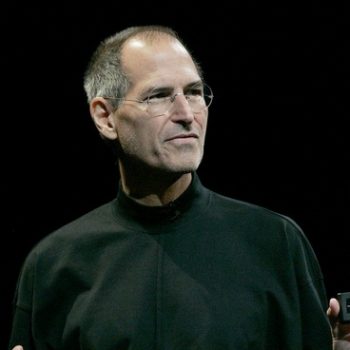Over the past decade, Apple has grown to be one of the most successful technology companies in the world, with other businesses striving to emulate its performance.(a)
One potential explanation for Apple’s ascendance is the company’s mastery of strategy under the leadership of CEO Steve Jobs. Dr. Michael Porter, a renowned professor at Harvard Business School and founder of the field of modern business strategy,(b) had the following to say about Jobs after he died:
“Steve Jobs stands out as the business leader of his generation who best understood innovation, differentiation, strategic positioning, and how to change the structure of industries. What’s especially remarkable is that he did this not once but several times.”
Looking back at Porter’s seminal 1996 article, “What Is Strategy?”, one can see how Jobs’ vision embodied many of Porter’s key concepts about effective strategy.1
Porter’s classic work differentiates between two key elements of business success: operational effectiveness and strategy. Operational effectiveness refers to maximizing the use of inputs in order to carry out similar activities better than one’s competitors. Strategy, on the other hand, “is performing different activities from rivals’ or performing similar activities in different ways.” According to Porter, although continued improvement in operational effectiveness is required for superior profitability, it is by no means sufficient. Strategy is essential for firms who want to truly outperform their peers.
Apple has certainly achieved a solid foundation of operational effectiveness through an, “unrelenting mastery of global operations.” Record investment in a flexible but tightly controlled supply chain and tough negotiations with suppliers allowed the company to capture a whopping 58% of the sale price of the iPhone 4.2 What Porter would likely suggest set Apple apart, however, was Steve Jobs’ strategic vision. In “What Is Strategy?”, Porter outlines three key elements of successful strategy and Jobs seems to have understood the importance of all three: the creation of a unique and valuable position in the marketplace, the willingness to make trade-offs in order to maximize the company’s competitive advantage, and the development of a fit among the company’s activities.
Jobs was known for his intense and exacting focus on design, which became a way for Apple to stake out a unique marketplace position. Their brand was built around aesthetically appealing, well-designed products and they developed an intensely loyal, design-savvy customer base.(c) Following Porter’s second principle, Apple was willing to make trade-offs to maximize the strategic advantages it had. As Jobs said in a 2008 interview, “Apple is a $30 billion company, yet we’ve got less than 30 major products. I don’t know if that’s ever been done before…. People think focus means saying yes to the thing you’ve got to focus on. But that’s not what it means at all. It means saying no to the hundred other good ideas that there are.” By producing a limited number of products that hew strongly to a unified design vision, Apple also benefits from complementary activities and products, Porter’s third principle of strategy. Many Apple products operate in a closed and harmonized ecosystem where, for example, content and applications for the iPod, iPhone, and iPad are most easily accessed and shared using Apple devices and purchases from the Apple-controlled iTunes store. This creates a better user experience, as Jobs once explained: “People are busy. They have other things to do than think about how to integrate their computers and devices.”3 It also means that improvements in any one product increase the value of other complementary products.
As Porter effectively argued in his classic work and Steve Jobs understood well, marking out strategy must be an integral part of business planning. Apple’s strong brand identity and consistent focus on design, its streamlining of the product line to maximize its advantages, and its closed and complementary eco-system of products have all contributed to its strategic success. Jobs helped create one of the most successful companies in the world and his vision as CEO demonstrates the importance of strategy for outperforming one’s competitors.
Endnotes
- Michael E. Porter (Nov. 1996) “What Is Strategy?” Harvard Business Review.
- Kenneth L. Kraemer, Greg Linden, and Jason Dedrick (July 2011) Capturing Value in Global Networks: Apple’s iPad and iPhone, Working Paper.
- Walter Isaacson (April 2012) “The Real Leadership Lessons of Steve Jobs,” Harvard Business Review.
Sidenotes
- (a) Apple posted record revenue of $46.3 billion for the fiscal quarter ending in December 2011, continuing its run as the most profitable technology company. The company’s profit of $13.1 billion topped Google’s entire revenue total for the same quarter and its cash holdings now surpass Amazon’s market valuation.
- (b) Dr. Porter is considered one of the world’s leading experts on strategy, management, and competiveness and is sometimes referred to as the “King of Strategy” for his contributions to the field.
- (c) When research firm Millward Brown released its 2011 global brand rankings, Apple topped the list. According to the firm, Apple’s brand is worth $153 billion, making it the most valuable brand in the world.





